
SEO is a dynamic beast that constantly changes. Even if you believe you know exactly what Google wants, an algorithm update can completely upend your plan. So, here’s the ultimate recipe for SEO success tips for you.
How do you deal with this?
Some proven SEO tactics will always be in practice, even as algorithm updates and improvements are constantly occurring. You can increase your chances of ranking your website by using these techniques, and you can also future-proof your site against Google changes in the future.
When it comes to SEO success recipe, there are two routes to affect change: on-page and technical. The purpose of today’s post is to examine both.
Table of Contents
Starting with on-page SEO tactics for Google’s SEO success is a great place to start, especially if you are new to SEO and want to make changes quickly.
When preparing your SEO strategy for 2022, here are some tips to keep in mind.
Long-tail keywords are more specific, longer, and more specific than your typical keyword targets. These are usually less popular than short keywords, but they can still be very useful.
Rather than just showing you what people search for, long-tail keywords give you insight into why they search. Additionally, long-tail keywords are now more popular than shorter keywords.
According to a recent study, long-tail keywords account for 91.8 percent of all searches. Internet searches have dramatically changed since the early days.
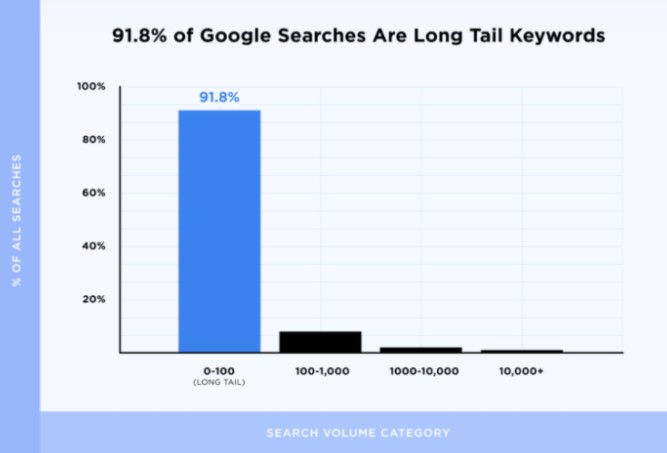
Keywords with long tails tend to have a greater search intent, which is one reason to target them. Due to their specificity, you can narrow your keywords down to those most related to what you want your visitors to do on your site.
For example, a long-tail keyword would be “how to rank on Google.” This would be in contrast to a short-tail keyword such as “Google ranking.”
Both of these variations have different intentions. Seeing how “how to rank on Google” is a question, you can tell the user is seeking a direct response.
When it comes to recipes for SEO success, it’s hard to tell exactly what users are looking for. Perhaps they are just wondering what it means.
Generally speaking, long-tail keywords tend to be less competitive due to their low search volume. Consequently, ranking for them might be easier.
Do you know how to use long-tail keywords effectively in your content?
If you want your current content to work, you don’t want to stuff it with long-tail keywords. Doing so can backfire.
The best way to incorporate long-tail keywords is as follows:
Alt text, the alternative text, provides a short explanation of an image. Ranking factors remain of great importance behind the recipe for SEO success, according to MozCast, which states that alt text affects results by more than 20%.
The 3 primary uses of alt text are:
Accessibility: A screen reader reads out loud alt text to visually impaired users. Unfortunately, 55 percent of e-commerce websites do not meet accessibility requirements.
Context: Whenever a user cannot see an image, the alt text is displayed to provide context.
Search Engine Optimization: Images with alt text are indexable by search engines. According to Google, stated in 2021, alt texts are still important for search engine optimization.
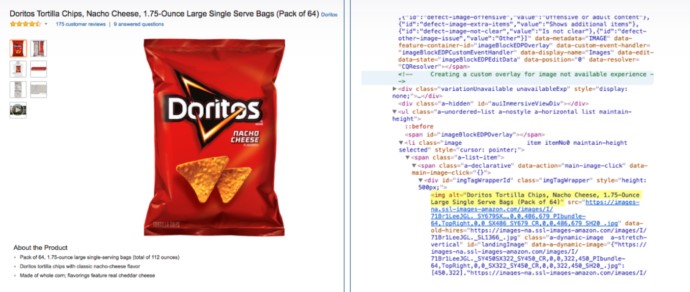
In addition, Google’s search algorithm continues to evolve as the internet grows more and more accessible.
Websites with accessibility features will be prioritized over those with no accessible ability. The more accessible a website is, the greater its traffic potential.
Alt text tips:
Using keywords in your headers lets search engines and users know that your content meets the intent behind those keywords.
Using keywords in headers can provide the same context for search engine bots as a table of contents does for users.
Though 36% of SEO experts see headlines as a significant element behind the recipe for SEO success, this does not mean forcing keywords to fit if they aren’t relevant.
If you want to place target keywords or other variations on your target keywords, consider the user experience and Google recommendations. Do not stuff your page with keywords.
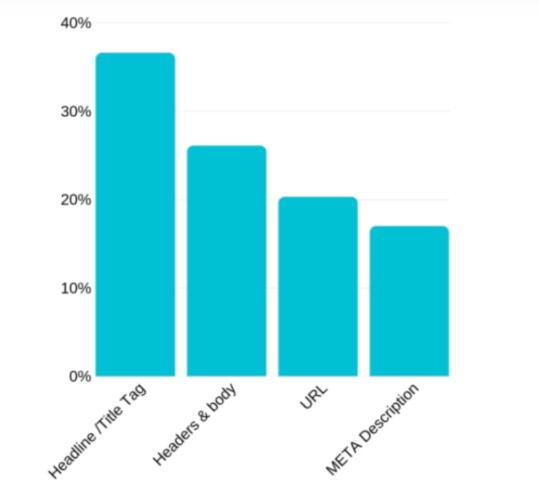
Tip: Use Keywords in the Headings
You must consider your users’ experience from start to finish, in addition to keywords and content.
To rank your website, Google considers several factors, including dwell time (or time spent on the page). When users leave your page within seconds of arriving, Google recognizes that your content is not what they’re looking for exactly.
A page’s loading time can have a significant impact on dwell time and bounce rates. Based on an analysis of over 5 million desktop and mobile pages, the average time required for a page to fully load on a desktop is 10.3 seconds, while on a mobile device, it takes 27.3 seconds.
Page load speed has the greatest effect on overall conversion rates during the first five seconds. Conversion rates drop by an average of 4.42 percent with every additional second it takes a page to load.
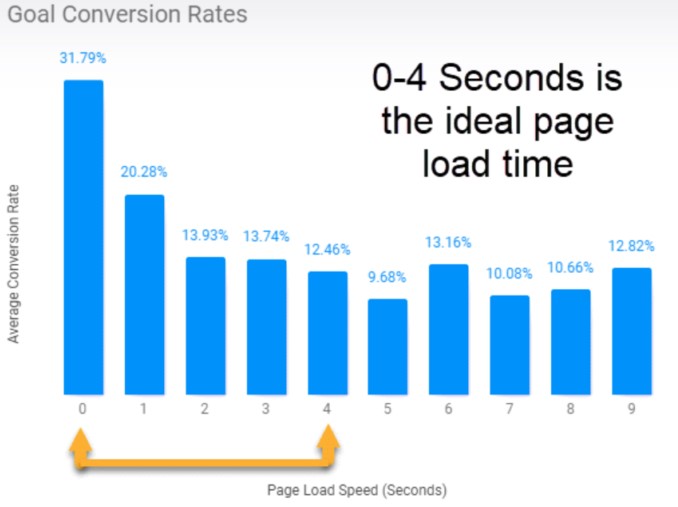
Since Google launched its core Page Experience update in 2021, user experience has become an increasingly important ranking factor.
Here are some UX tips:
Indirectly, there are a few things that you can do that enhance your SERP rankings to get Google’s SEO success. And, making use of multiple media types on your blog is one of those things.
Images are just one piece of media. Audio files, videos, ebooks, and GIFs are some others. Media types like these increase dwell time on your website and improve user experience because they entice users to engage.
Hubspot reports that videos are the #1 media form used in most content strategies, exceeding blogs. Well, 86 percent of businesses use a video marketing strategy to grow their business, and 84 percent of consumers say that watching a brand’s video is the thing that made them purchase something.
Also, audio is rising in popularity as consumers spend huge time listening to music. As well, 61 percent of businesses are already planning to increase digital audio ad budgets.

You can improve user experience and increase dwell time by incorporating videos and audio into your blog. Insert short audio recordings into blog posts and short video clips that simplify challenging concepts.
You might also consider:
The recipe for SEO success includes proper internal linkings. As mentioned above, when ranking your website, Google considers the amount of time spent on each page. Your entire website also gets the same treatment when ranking. That’s another factor the Google algorithm considers when determining rankings.
More likely, a user will get into the funnel the longer they stay on your website. It also tells search engines that your content is relevant and of high quality.
Over 80% of SEOs believe that every blog post should include at least two to five internal links, and most spend the same amount of time developing both internal and external links.
To increase time spent on your site, you need to do two things:
You can drive users deeper into your website by linking to internal content. Thus, you increase the possibility of them engaging with your content (e.g., commenting on a blog post or sharing on social media), and in turn, this will boost your SERP rankings.
Below are some tips on how to integrate and leverage internal links:
When building your SEO strategy, technical SEO is often overlooked. But it is still a significant part of your recipe for SEO success. Google is not likely to change this anytime soon.
Check out these quick technical SEO tips for 2022.
Without getting rid of spammy backlinks, your recipe for SEO success would not be completed. So, when it comes to Google’s SEO success, backlinks used to be the secret weapon. Even though Google still heavily weighs backlinks in its rankings, the quality of these backlinks has become more crucial than ever before.
As part of Google’s 2021 algorithm update, it devalued and targeted awful backlinks. It did not penalize any individual sites, though it did stop counting many backlinks that many websites had gotten used to, which affected rankings.
There are still plenty of websites that do not receive organic traffic from Google. However, 91 percent of all pages of its site don’t have any backlinks because over half of those pages have no backlinks.
You may have received backlink requests in the past if you’re the website owner. These requests may come with monetary compensation. Requests typically come from websites with lower domain authority scores or who engage in shady SEO practices.
Whenever you request a backlink, you should vet it carefully, just as you would with content sources, to ensure it won’t negatively affect your site. To understand how you compare your site to your competitor, how can you know what sites link to you? Simply put, use a backlink analysis tool. You can view your backlink profile simply by entering your domain URL:
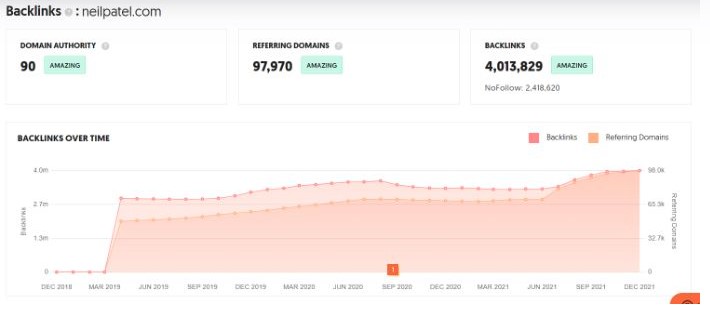
It is also possible to see the domain authority of their linking site, as well as the anchor text they used to link to you:

Avoid spammy backlinks by following these tips:
Brands have become increasingly important to Google since the late 2000s. As a result, they use brand signals to clarify misinformation and deliver more reliable results for each search. Brand signals play a key element in completing the recipe for SEO success.
A brand’s revenue can increase by up to 23 percent when the brand is represented consistently across all of its platforms. It is also easier to express your values and increase customer loyalty when your brand is consistently represented.
89% of consumers are willing to stay loyal to brands with values that align with their own.
In the process of building and increasing your brand, you can expect to receive more traffic from non-branded terms and brands. This is why I see millions of organic views every month!
Brand building tips
Once your website has solid, pillar content (i.e., well-written content targeting relevant keywords), it is time to think strategically. It’s not just about being an information site but also about being an authoritative site. Strategic content and thought leadership can help you achieve this.
About 54 percent of decision-makers read thought leadership content relevant to their businesses at least one hour per week. Yet 71 percent of respondents say less than half of what they read provides valuable information.
This content represents a huge opportunity. To do so, you have to anticipate questions that have not yet been asked. The key is to get ahead of the current situation by speaking directly with industry leaders and subject matter experts.
The effort and time it takes to create this type of content are well worth it. The more content you create that other brands will look to, the more backlinks you will receive.
Here are some tips to boost your thought-leadership and strategic writing:
Diversifying your backlink profile refers to what? As many links as you can get from as many sites as you can is what you want.
Based on Ahfrefs’ analysis of over 1 billion web pages, it was determined that 66.31 percent of them had zero referring domains, while 26.29 percent of them had one to three referring domains.
Shockingly, less than 0.1 percent of sites had more than 100 domains referring to them, which makes sense when you stop to think about it.
Backlink diversification tips
EAT stands for Expertise, Authority, and Trust.
The recipe for SEO success won’t be complete without EAT. EAT scores are one of the most important aspects of quality page evaluation. There is no need to be an expert or authority on all of the topics you write on, but you should emulate these individuals’ content to rank better.
In general, 47% of buyers read 3 to 5 pieces of content before contacting a salesperson. The more you emulate the content of subject matter experts before your content is visible to the buyer, the more likely they are to engage with your content.
Whether you’re creating thought-leadership content or not, subject matter experts can still help. The best way to obtain authority from these people is through interviews with them, but that’s not the only way.
Some tips for enhancing your EAT score:
ThemeLooks specializes in full-stack web development, from front-end coding to custom theme development, to UI/UX design, using PHP CMS such as WordPress, Bootstrap framework, jQuery, HTML5, CSS3, and Javascript.
The WordPress themes and plugins and the HTML5 templates are the products by which ThemeLook is making a difference in the WordPress community. Having said that, all these items are fully SEO- optimized that would be best for your WordPress site by far.
Well, here’s the ultimate recipe for SEO success in 2022. To get ranked high on Google’s SERPs, you have to follow all the above instructions.
No matter how and what Google changes in its algorithm, you need to keep yourself updated all the time accordingly. Therefore, always go with Google; otherwise, Google won’t support you.
If you find this worthy of sharing, feel free to share this SEO recipe with your near and dear ones. And, don’t hesitate to let us know any other recipe for SEO to walk with Google side by side in 2022.